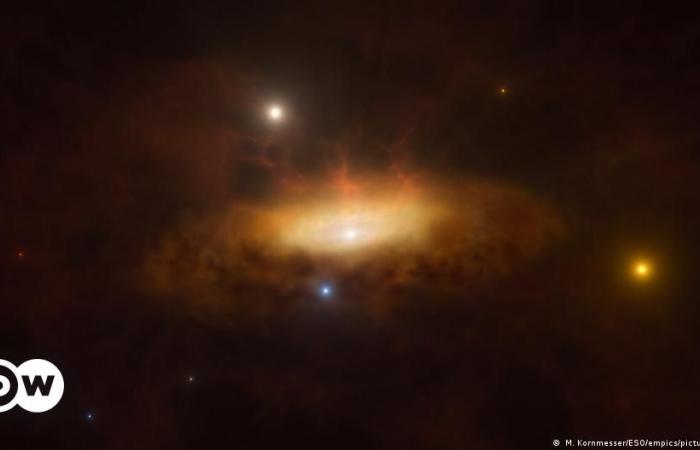Astronomers have been able to observe for the first time a supermassive black hole awaken and set fire to the heart of the galaxy that houses it, the European Southern Observatory reported on Tuesday.
The galaxy, located 300 million light years from Earth in the constellation Virgo, had been quiet for decades until late 2019, when it suddenly began to shine brighter than ever.
Since then, the center of the galaxy – where a supermassive black hole is believed to be located – has been emitting a wide variety of radiation.
“This behavior is unprecedented,” said Paula Sánchez Saez, Chilean astronomer at the European Southern Observatory and lead author of a new study published in the journal Astronomy & Astrophysics, in a statement. .
The “most tangible option” to explain this glow is that astronomers detected “the activation of a massive black hole in real time,” said Lorena Hernández García, co-author of the study.
Most galaxies — including the Milky Way Galaxy in which Earth is located — are believed to have a supermassive black hole at their center.
These cosmic colossi are, by definition, invisible — not even light can escape their incredible force of gravity.
The only way to observe black holes is when they destroy something huge that emits light in its death throes: like a star that got too close and was engulfed.
“These giant monsters are usually sleeping,” explained Claudio Ricci, co-author of the study.
Light black hole
But in the case of the galaxy SDSS1335+0728, “we were able to observe the awakening of the massive black hole, (which) suddenly began to feed on the gas available in its surroundings, becoming very bright,” added the astrophysicist.
Initial observations indicate that the black hole has 1.5 million times more mass than the Sun, which is enough to be classified as a supermassive black hole.
James Webb: views of black holes
This browser does not support the video element.
Despite this, it is a featherweight: true heavyweights easily exceed 1 billion times the mass of the Sun.
The international team of astronomers is analyzing data from several telescopes in hopes of determining whether the black hole activity is temporary — perhaps caused by a star being torn apart — or whether it will remain active for a long time.
“This is something that could also happen to our own Sgr A*,” which is what the Milky Way’s supermassive black hole is known as, Hernández García said.
But fortunately for the human race Sgr A* remains fast asleep.
the(AFP, Reuters)






